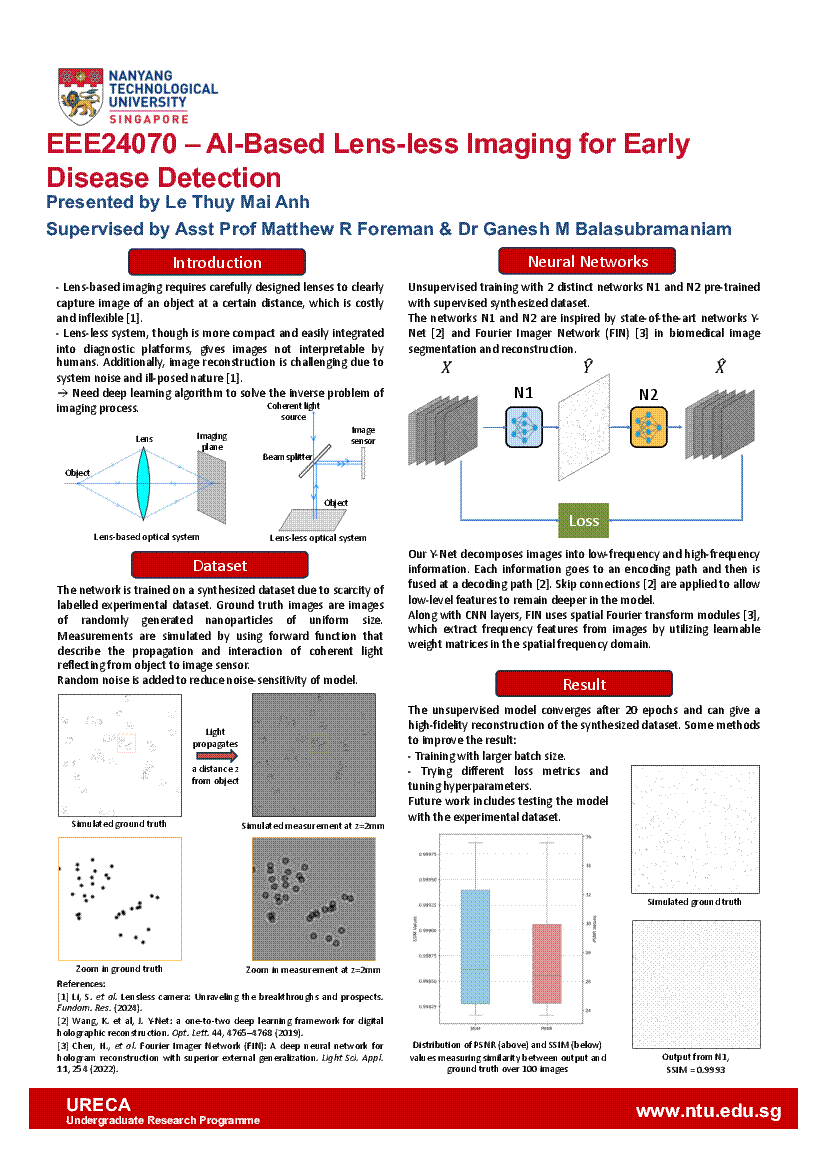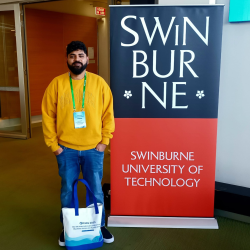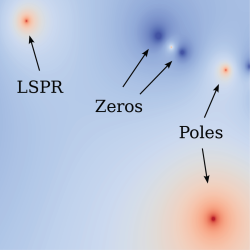


About us
We are a theoretical research group at the School of Electrical and Electronic Engineering and the Institute for Digital Molecular Analytics and Science at Nanyang Technological University, Singapore. The group is lead by Assistant Professor Matthew R. Foreman.
Our research focuses on optical and plasmonic sensing, polarisation sensitive imaging, disordered media and electromagnetic theory. More information on some of our past and present projects can be found by visiting our Research pages.
Recent news

URECA Poster Competition Winner
24 Jun 2025: Congratulations to one of our URECA students, Mai Anh Le Thuy, who has been named as one of the URECA poster competition winners. This is testament to all of her hard work throughout the last two semesters and is well deserved! You can see the poster here. Well done!

ICMVA 25
13 Jun 2025: This week Ganesh is at the International Conference on Machine Vision and Applications (ICMVA 25) in Melbourne, Australia to present on some recent results on image reconstruction in lensless imaging using a genetic programming approach. Check out his talk!

FOM 25 poster
3 Apr 2025: We are looking forward to the Focus on Microscopy conference. This year Matthew and Ganesh will be in Taipei, Taiwan. In addition to his oral talk, Matthew will present a poster on some of the recent IDMxS work on nanoparticle imaging based assays. If you want a preview of the poster you can view it here.
Recent publications

Abstract : Exceptional points (EPs) in non-Hermitian photonic systems have attracted considerable research interest due to their singular eigenvalue topology and associated anomalous physical phenomena. These properties enable diverse applications ranging from enhanced quantum metrology to chiral light-matter interactions. Practical implementation of high order EPs in optical platforms however remains fundamentally challenging, requiring precise multi-parameter control that often exceeds conventional design capabilities. This work presents a novel framework for engineering high order EPs through transformation optics (TO) principles, establishing a direct correspondence between mathematical singularities and physically controllable parameters. Our TO-based paradigm addresses critical limitations in conventional Hamiltonian approaches, where abstract parameter spaces lack explicit connections to experimentally accessible degrees of freedom, while simultaneously providing full-field mode solutions. In contrast to prevailing parity-time-symmetric architectures, our methodology eliminates symmetry constraints in EP design, significantly expanding the possibilities in non-Hermitian photonic engineering. The proposed technique enables unprecedented control over EP formation and evolution in nanophotonic systems, offering new pathways for developing topological optical devices with enhanced functionality and robustness.

Abstract : Perturbing resonant systems causes shifts in their associated scattering poles in the complex plane. In a previous study [arXiv: 2408.11360], we demonstrated that these shifts can be calculated numerically by analyzing the residue of a generalized Wigner-Smith operator associated with the perturbation parameter. In this work, we extend this approach by connecting the Wigner-Smith formalism with results from standard electromagnetic perturbation theory applicable to open systems with resonances of arbitrary quality factors. We further demonstrate the utility of the method through several numerical examples, including the inverse design of a multi-layered nanoresonator sensor and an analysis of the enhanced sensitivity of scattering zeros to perturbations.

Abstract : Resonances of open non-Hermitian systems are associated with the poles of the system scattering matrix. Perturbations of the system cause these poles to shift in the complex frequency plane. In this work, we introduce a novel method for calculating shifts in scattering matrix poles using generalized Wigner-Smith operators. We link our method to traditional cavity perturbation theory and validate its effectiveness through application to complex photonic networks. Our findings underscore the versatility of generalized Wigner-Smith operators for analyzing a broad spectrum of resonant systems and provides new insight into resonant properties of non-Hermitian systems.
Funding
Our research is supported by generous funding from:



